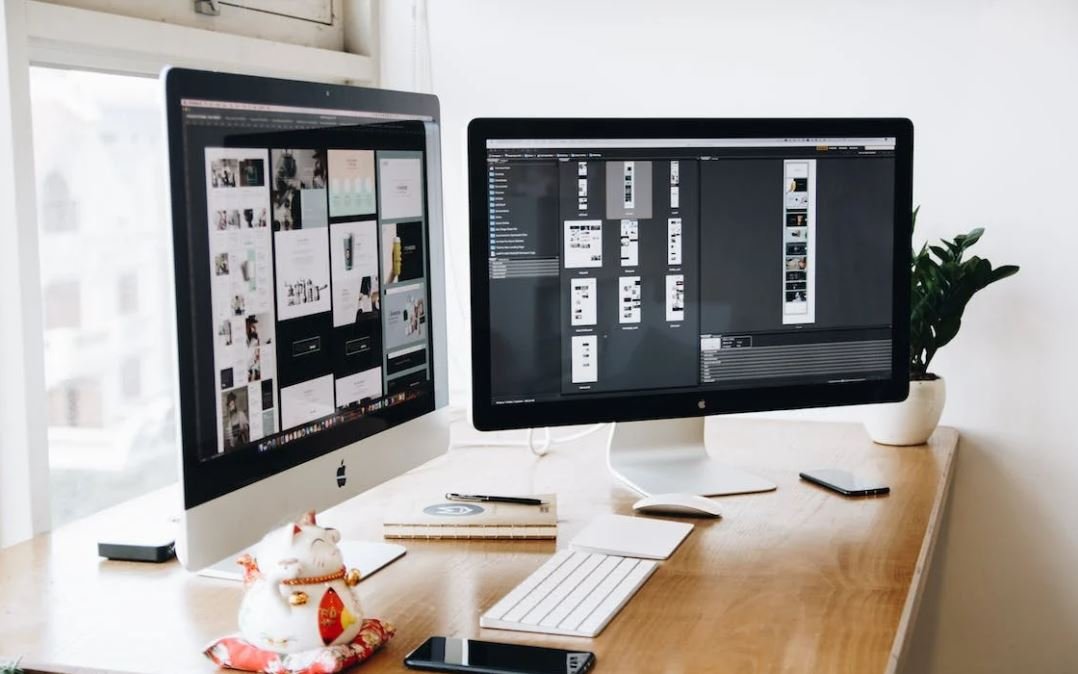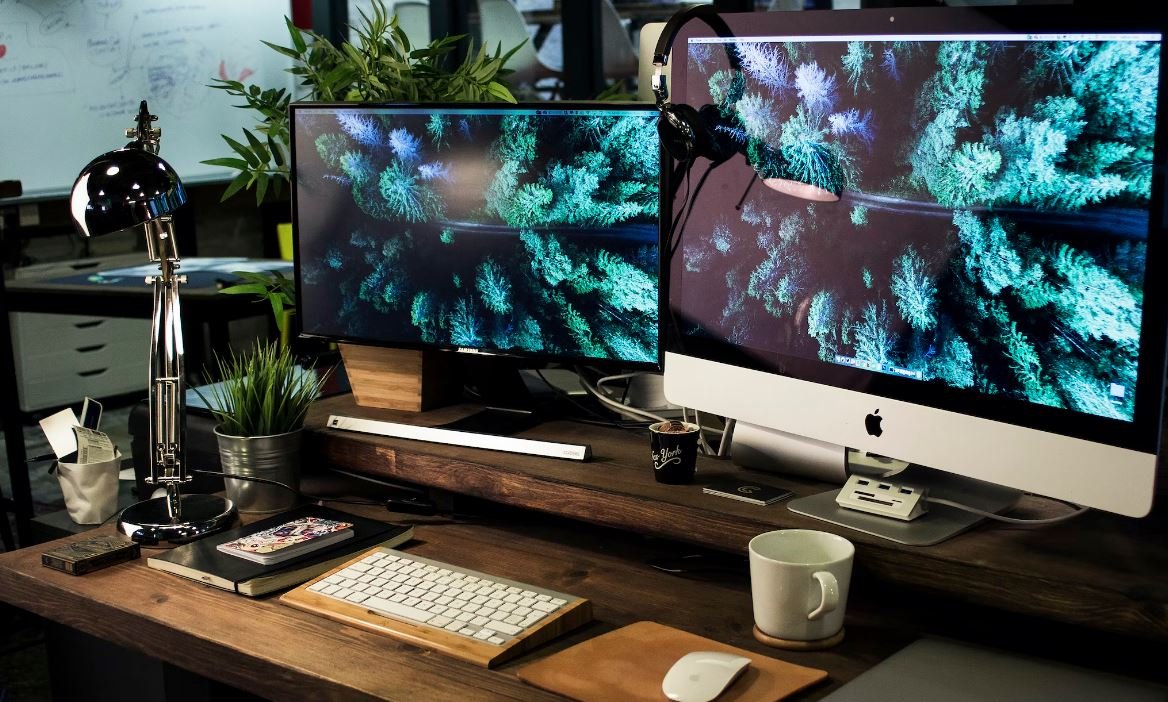Footage vs Clip
When working with video content, it’s important to understand the difference between footage and clip. These terms are often used interchangeably, but they actually have distinct meanings. To effectively manage and edit your videos, it’s crucial to grasp these concepts.
Key Takeaways:
- Footage and clips are separate elements in video production.
- Footage refers to the raw, unedited video material captured during a shoot.
- A clip is a short segment of footage that is selected and used in the final edited version.
- Footage is the foundation of a video project, while clips are the building blocks used to create the final product.
**Footage** is the raw material that is recorded during a video shoot. It encompasses all the footage captured, including the usable and unusable takes. This original footage is often referred to as “rushes” or “dailies.” It typically contains all the scenes and sequences shot during the production process, preserving the entire context of the shoot.
*This unedited material provides the editor with a wide range of options for selecting the best shots and creating compelling visual narratives.*
On the other hand, **clips** are short segments of footage that are selected, trimmed, and organized to create the final edited video. Clips are typically chosen based on their relevancy, technical quality, and storytelling impact. They are carefully curated from the raw material to convey the intended message and maintain a coherent flow in the final product.
*Through the process of clip selection and arrangement, editors transform raw footage into a cohesive video story.*
Footage versus Clip
To further highlight the differences between footage and clips, let’s consider some key aspects:
| Aspect | Footage | Clip |
|---|---|---|
| Length | Long and uninterrupted | Short and focused |
| Purpose | Foundation of the video project | Building block for the final edited version |
| Selection | Entirely shot material | Carefully chosen segments |
Table 1: Comparison between footage and clips in terms of length, purpose, and selection.
The process of selecting clips from footage involves reviewing, categorizing, and organizing the available material. Editing software provides tools to mark in and out points, enabling editors to trim and extract desired segments. This selection process plays a crucial role in shaping the final video product.
*By selectively choosing the most impactful moments, editors shape the narrative of the video.*
Using Footage and Clips Effectively
To make the most of your footage and clips, it is helpful to follow these guidelines:
- Organize your footage into well-defined folders and subfolders, categorized by location, date, or other relevant criteria.
- Use descriptive file and folder names to easily identify the content of each item.
- Review and categorize your footage before starting the editing process. This will help you familiarize yourself with the material, making it easier to select the best shots.
It’s worth noting that digital asset management systems can greatly assist with organizing and searching your video assets, making your editing process more efficient.
Bringing it all Together
In summary, understanding the distinction between footage and clips is essential for effective video editing. Footage represents the raw material captured during filming, while clips are the carefully selected segments used in the final edited version. By organizing, reviewing, and selecting clips from your footage, you can create powerful and engaging videos that effectively communicate your message to your audience.
So remember, when working with video, it’s not just about the footage you have, but how you **select and utilize the clips** to bring your vision to life.

Common Misconceptions
The term “Footage” is the same as “Clip”
One common misconception people have is that the terms “footage” and “clip” are interchangeable and refer to the same thing. However, they have slightly different meanings in the context of media production.
- Footage is typically used to describe raw, unedited content captured by a camera.
- A clip, on the other hand, refers to a selected and edited segment of footage that has been trimmed, enhanced, or modified in some way.
- Understanding the distinction between footage and clips is important for accurately communicating and managing media assets.
All clips are labeled with proper titles
Another common misconception is that all clips are accurately labeled with proper titles. Unfortunately, this is not always the case, especially when managing a large collection of media assets.
- Inaccurate or inconsistent labeling of clips can lead to confusion and make it difficult to locate specific content.
- Even though it is best practice to title clips appropriately, human error, oversight, or time constraints can result in improper labeling.
- It is important to double-check and verify the titles of clips to ensure efficient searching and organization of media assets.
All footage is clear and high quality
Some people may assume that all footage is clear and of high quality. However, this is not always the case due to various factors that can affect the quality during the recording process.
- Poor lighting conditions, camera settings, and environmental factors can result in footage that is grainy, blurry, or of low resolution.
- Additionally, issues with the camera equipment or the storage medium used to capture footage can also impact its quality.
- It is important to review and assess the quality of footage before including it in a project to ensure it meets the desired standards.
All clips are royalty-free or in the public domain
There is a misconception that all clips available online are either royalty-free or in the public domain, meaning they can be used without obtaining permission or paying for their usage. However, this assumption can be misleading.
- Many clips found online are protected by copyright and require proper licensing or permission to be used legally.
- It is crucial to understand the licensing terms and conditions associated with a clip to avoid copyright infringement and legal consequences.
- Always ensure you have the necessary rights to use a clip before incorporating it into a project.

Introduction
In the world of media and entertainment, the terms “footage” and “clip” are frequently used. While they may seem similar, they actually refer to different aspects of audiovisual content. In this article, we will explore the distinctions between footage and clips by presenting ten tables with interesting data and information.
Table: The Origins of Footage and Clips
Footage and clips have distinct historical origins that have influenced their contemporary usage. Understanding their roots can help us appreciate their unique characteristics.
| Footage | Clips |
|---|---|
| Originally referred to the length of film that captured continuous motion. | Derived from the act of cutting snippets from a longer video or film. |
| Associated with documentary-style filmmaking. | Commonly used in news and online content. |
| Typically shot on film reels. | Can be sourced from various digital media. |
Table: Length and Duration
The duration of footage and clips is an important aspect that distinguishes them. Let’s dive into the time-related characteristics of each.
| Footage | Clips |
|---|---|
| Footage can span from seconds to hours, depending on the intended purpose. | Clips are generally shorter in duration, often ranging from a few seconds to several minutes. |
| Used in feature films and extensive video projects. | Popular in commercials, social media, and short-form content. |
| Footage often requires editing and can be part of a larger storytelling approach. | Clips typically aim for concise delivery of information or visual impact. |
Table: Potential Applications
The distinct characteristics of footage and clips make them suitable for different applications. Let’s explore some common scenarios where they are frequently utilized.
| Footage | Clips |
|---|---|
| Documentaries | Online advertisements |
| Fiction feature films | Social media posts |
| News segments | Tutorials or how-to videos |
Table: Licensing and Copyright
Dealing with licensing and copyright is an important consideration when using footage and clips in various applications. Let’s delve into this aspect of their usage.
| Footage | Clips |
|---|---|
| May require obtaining rights/licenses from original creators or agencies. | Can be sourced from various platforms that offer royalty-free or creative commons content. |
| Specific permissions needed for using copyrighted content within films or commercials. | Many clips are released under permissive licenses for easy incorporation into projects. |
Table: Cost Considerations
The financial aspects of utilizing footage and clips can vary. A closer look at their cost considerations provides insights into their accessibility.
| Footage | Clips |
|---|---|
| Acquiring film footage can be costly, taking into account film stock, processing, and digitization. | Clips are often more affordable or even free, depending on the platform or license. |
| Professional production companies may charge high fees for licensing exclusive footage. | Amateur footage and user-generated clips are readily available online at minimal or no cost. |
Table: Technical Specifications
The technical specifications of footage and clips can influence their usability and quality. Let’s examine some of these specifications.
| Footage | Clips |
|---|---|
| Traditionally captured on 16mm or 35mm film, ensuring high-resolution images. | Digital clips offer versatility, varying in resolutions, formats, and aspect ratios. |
| Complex post-production workflows may be needed for film footage, including color grading and restoration. | Clips often require less post-processing, especially when obtained in the desired format and resolution. |
Table: Visual Styles
Footage and clips can exhibit diverse visual styles, each serving different creative purposes. Let’s explore some visual distinctions between them.
| Footage | Clips |
|---|---|
| Often characterized by cinematic and narrative qualities, evoking emotion and immersion. | Focus on concise visual impact, conveying information efficiently through limited runtime. |
| Allows for elaborate lighting setups, professional camera movements, and artful compositions. | Often captures real-life moments, spontaneous events, and shorter narratives. |
Table: Sound Design
The role of sound design may differ when working with footage and clips. Let’s explore how audio is used in each context.
| Footage | Clips |
|---|---|
| Audio is consciously designed and synchronized with visuals, enhancing the narrative and emotional impact. | Sound design is crucial but often simplified, as clips tend to prioritize concise and easily consumable content. |
| Requires extensive post-production processes, including dialogue editing, foley, and music composition. | Clips may utilize royalty-free music or sound effects to enhance and engage the audience quickly. |
Conclusion
In this article, we have explored the distinctions between footage and clips, shedding light on their historical origins, duration, applications, licensing, cost considerations, technical specifications, visual styles, and sound design. Understanding these differences allows us to make informed decisions when working with audiovisual content in various creative endeavors. Whether you require extensive narrative storytelling or concise visual impact, the choice between footage and clips depends on the intended purpose and desired outcome. Incorporating the appropriate elements into your media projects can elevate the overall quality and effectiveness of the final result.
Frequently Asked Questions
What is the difference between footage and clip title?
Footage refers to the raw unedited video content captured during filming. It may include various shots, angles, and takes. On the other hand, clip title refers to the name or title given to a specific segment or section of footage, which helps to identify and organize it.
Why is it important to have clear clip titles?
Clear clip titles are essential for efficient video editing and organization. They help to easily identify and locate specific clips within a large collection of footage, saving time and effort during the editing process.
How should clip titles be formatted?
Clip titles should be concise and descriptive, providing relevant information about the content of the clip. It is recommended to use a standardized format or naming convention to ensure consistency across different clips and projects.
Can clip titles include keywords for SEO purposes?
Yes, including relevant keywords in clip titles can enhance search engine optimization (SEO) for video content. By using keywords that accurately represent the clip’s content, it becomes easier for search engines to index and rank videos.
What factors should be considered when choosing clip titles?
When choosing clip titles, factors such as the subject matter, context, and intended audience should be considered. It is important to select titles that effectively summarize the clip’s content and provide useful information to viewers or collaborators.
Should clip titles be unique?
Yes, each clip title should be unique to avoid confusion and ensure the accurate identification of specific clips. Uniqueness is crucial in large video projects where multiple clips with similar content may exist.
Are there any best practices for organizing clips and footage?
Yes, organizing clips and footage can be efficiently done by using a consistent folder structure and file naming system. Creating separate folders for different projects, scenes, or themes, and applying logical naming conventions, can greatly aid in the organization process.
How can I manage a large amount of footage effectively?
Managing a large amount of footage can be facilitated by utilizing video editing software that offers robust organization and search capabilities. Additionally, properly tagging clips, applying metadata, and creating keyword-rich descriptions can help streamline the management process.
Can clip titles be changed after editing is complete?
Yes, clip titles can be changed after editing is complete, although it is advisable to avoid excessive changes to maintain consistency and avoid confusion. If a title change is necessary, it is recommended to update it across all related files and references.
Are there any tools available to automate the process of clip title generation?
Yes, there are various tools and software available that can automate the process of clip title generation. These tools often utilize artificial intelligence or machine learning algorithms to analyze the content of the clip and suggest suitable titles based on predefined criteria.




